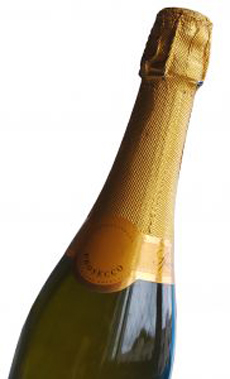TIP OF THE DAY: Switch Wines For Summer
|
|
In the hot weather months, we eat lighter foods and drink lighter styles of beer.
How about wine? In addition to pairing well with lighter foods, consider three summer-appropriate wines—Albarino, Malbec and Prosecco—that are also lighter on the wallet ($10 to $15 a bottle). And, they’re vinified to be drunk as soon as you buy them—no aging required. VERO restaurant and wine bar in New York City is highlighting three wines on its summer menu: red Malbec, white Albariño and sparkling Prosecco. They work with lighter summer foods, as well as with bold-flavored favorites—such as beef and spicy dishes—that we enjoy year-round, and which require wines that are equally intense and full-flavored. So instead of sticking with the tried and true, embrace the joy of wine and discover new favorites. WHAT TO TRY Argentinean Malbec instead of Cabernet Both red wines are robust in body and flavor, with firm tannins that pair beautifully with grilled meats. But Malbec is vinified to be drink younger than Cabernet Sauvignon. |
|
|
Malbec has been called “the more rustic cousin of Merlot” by wine expert Jancis Robinson. The primary red grape of Argentina, Malbec is deep purple in color and lush with ripe, juicy berry and plums flavors. Some yield herbal, licorice/anise and violet notes. VERO is serving the 2010 Callia Alta Malbec (black cherry and plum flavors with hints of oak and spice, around $10 in stores) with a seared New York strip of beef and fries, finished with a smoked chili aïoli. Spanish Albariño instead of Sauvignon Blanc The grapefruit notes of both of these white wines compliment appetizers, grilled fish, shellfish, poultry and vegetarian dishes, as well as spicy seafood-based foods such as jambalaya (recipe). Albariño is the primary white grape grown in the Rias Baixes wine region, in the northeast corner of Spain (the part that sits on top of Portugal). The wines are highly aromatic with excellent acidity, an attribute that makes them very food-friendly. The palate yields apple, citrus and/or pear notes. VERO is serving the 2010 Morgadio Albariño (kiwi and mineral flavors, around $15 in stores) with pan seared mahi mahi over creamy polenta, with roasted tomatoes, baby fennel and sundried tomato vinaigrette. Prosecco instead of Champagne The effervescence of both sparklers is charming. But whereas Champagne’s sophisticated profile is heavy on yeast and breadiness/toastiness, Prosecco is light and fruity on the palate, with a nose of almonds, apples, and pears. Because it is meant to be drunk young, it is typically non-vintage. Serve it with charcuterie, salads, fish and seafood and spicy Asian foods. It is a very food-friendly wine. VERO is serving the Ricardo Pasqua Prosecco (an extra-dry spumante with a nose of sweet almonds, about $11 in stores) with a rock shrimp tempura and yuzu chili aïoli. So hit the wine store and start trying different bottles to find your favorite producers. Remember that you can search for reviews online to match up the specific wine producer’s profile with your tastes. *Champagne is unique among wine regions. The bottlings are usually a mixture of wines from different vintages (called non-vintage or NV). Vintage Champagne is a blend of wines from that one particular year indicated on the label, when the quality of the harvest, measured by the sweetness of the grapes, meets the requirements to declare a “vintage.” True vintage years may happen three or four times a decade, or fewer; vintage Champagnes need to be laid down for a longer period of time to mature. Because vintage Champagne commands a significantly higher price, some Champagne houses “declare” a vintage in a year when others do not feel the quality of the harvest merits it. This doesn’t imply that nonvintage Champagnes are inferior; in fact, in non-vintage years, wines are blended together to create the house’s “perfect” recipe.
|
||



